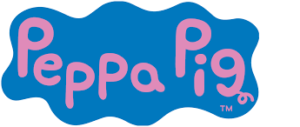Benefits of reading to young children
There are many benefits of reading or listening to a story for our children and young people, some of these are as follows:
- Promotes brain development, concentration and ability to focus
- Develops imagination and curiosity
- Develops language, communication and vocabulary
- Encourages ability to express emotions
- Building and strengthening relationships and developing social skills
- Develop literacy skills and pre-reading skills such as exploring letters, words and that text conveys meaning.
Stories are also a good tool to use to teach children about a new situation, event or concept, such as starting school, a new baby in the family, dealing with our emotions etc.
Before a child is ready to read
- We have to expose children to books, stories and words to allow them to explore, investigate and learn about them
- Having lots of experience looking at and listening to a story, children will begin to value and enjoy them. Children will become comfortable and familiar with this activity and be more likely to read through their educational journey.
What skills are involved in “pre-reading”
- looking at words and books = familiarise and build up enjoyment in this activity
- Reading a story with an adult = children start to learn the basic skills of looking at the words/text from left to right.
- Children are able to identify pictures easier than words. Using this ability during story time is useful when encouraging the children to predict and guess what they think is happening on the page.
- Encouraging the children to follow the text with your finger as you read the words shows children basic pre-reading skills and helping them to feel involved in the story telling process.
Reading opportunities
Reading opportunities are everywhere and taking these short opportunities during our daily lives will provide lots of learning experiences for our young learners, such as:
- Initial letters – “can you find the first letter from your name while we are on our walk to nursery” (looking for the letter on signs, car registration plates, street signs etc.)
- Names – “The post man has brought us a letter, I wonder who it is for, can you recognise who’s name this is?” (encouraging your child to help you read the name on the post if this is something they are showing interest in)
- Environmental print – “I wonder what that sign says” (supermarkets, toy shops, logos, food packaging, cartoon titles … children often learn to recognise these familiar environmental prints before they are able to read the written name of these. They see these as pictures rather than reading the words and this is a good building block to being able to read. Encouraging your child to identify these during your day are beneficial in strengthening their pre-reading skills)






